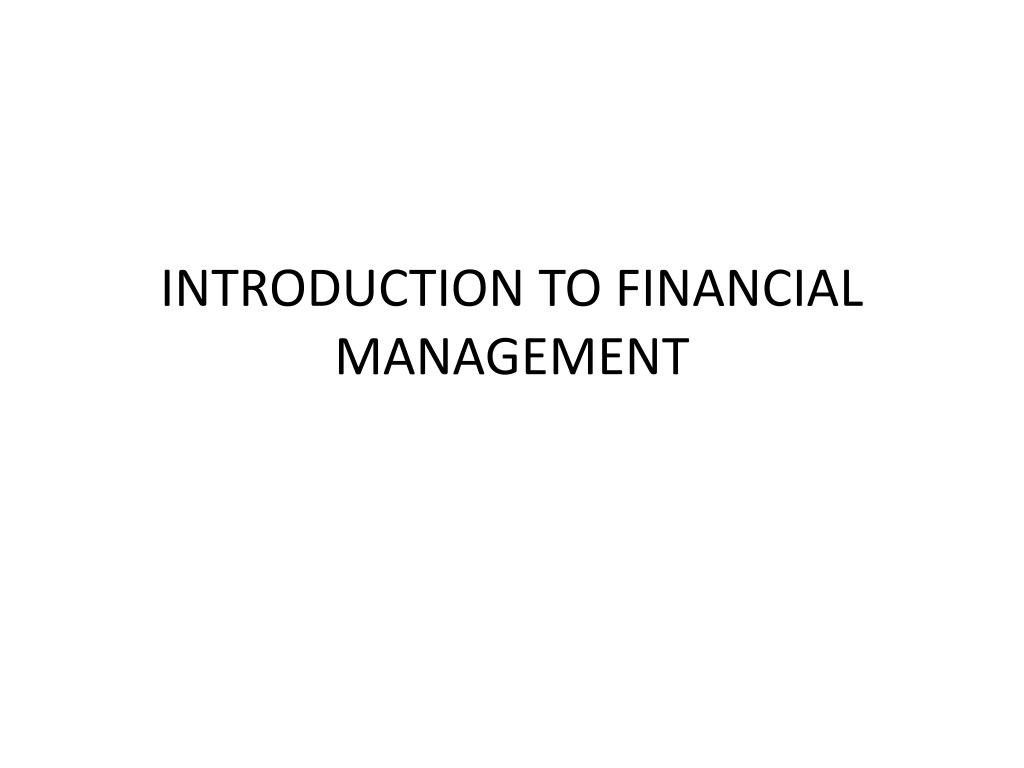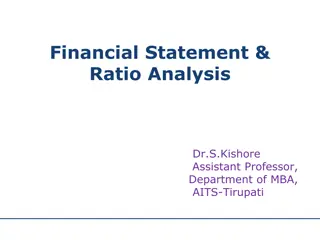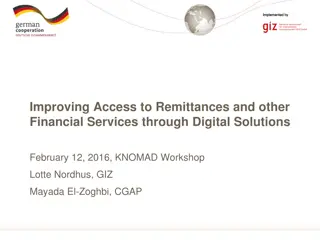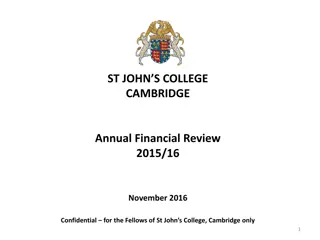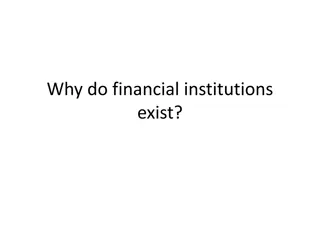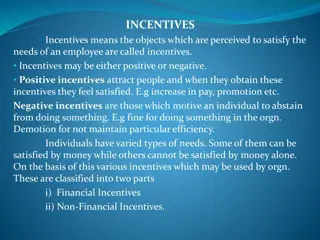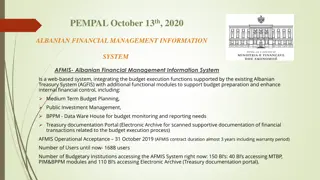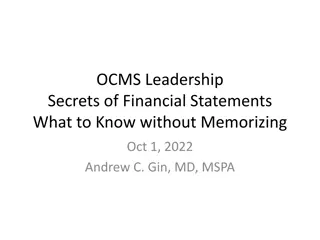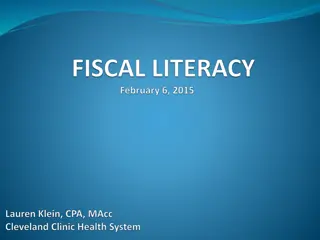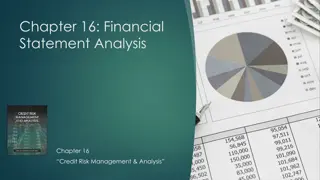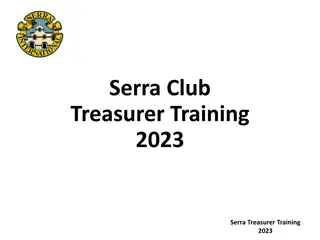Understanding the Basics of Financial Management
Financial management involves planning, organizing, directing, and controlling financial activities in a business. It encompasses objectives such as profit maximization and wealth maximization, along with functions like traditional and modern approaches to finance. Key financial decisions include capitalization, capital structure, cost of capital, and leverage. The concepts of capitalization, cost of capital, and leverage play vital roles in determining the financial health of an organization.
Download Presentation

Please find below an Image/Link to download the presentation.
The content on the website is provided AS IS for your information and personal use only. It may not be sold, licensed, or shared on other websites without obtaining consent from the author. Download presentation by click this link. If you encounter any issues during the download, it is possible that the publisher has removed the file from their server.
E N D
Presentation Transcript
INTRODUCTION TO FINANCIAL MANAGEMENT
Financial Management It simply means management of finance.It is the art of planning, organising, directing, controlling financial activities in a business enterprise. According to Joseph and Massie Financial management is the operational activity of a business that is responsible for obtaining and effectively utilising the funds necessary for efficient operations.
OBJECTIVES OF FINANCIAL MANAGEMENT Profit Maximization : Every stake holders in a company will try to earn a maximum rate of profits on capital employed and it also increases the efficiency of the organization. Wealth Maximization : It means maximizing the market price per share in the long run so as to maximize the earning per share of a share holder.
FINANCE FUNCTION It can be explained with the help of following approaches Traditional Approach : According to this approach finance function is the task of providing funds needed by the enterprise on most favorable terms. Modern Approach : Here it is concerned with proper procurement business finance. and utilization of
FINANCIAL DECISIONS Financing decisions-capitalization, capital structure, cost of capital. Investment decisions-capital budgeting and working capital management. Dividend decisions- retention decision and dividend payout decision.
CAPITALIZATION AND CAPITAL STRUCTURE Capitalization : It refers to the amount of capital invested in a business. It may be Fair capitalisation : Where investment justify its earnings Under capitalisation : Where earning are more compared to its investment. Over capitalisation : Where earnings are not sufficient to give a fair rate of return on its capital employed. Capital Structure : It refers to the kinds of securities and the proportionate amounts that make up capitalization.
COST OF CAPITAL Cost of Capital : It is the minimum rate or cut of rate expected by an investor from his investment. It may be Specific cost : It refers to the cost of specific source of capital. It includes cost of equity share, cost of preference share, cost of debentures etc Composite Cost : It refers to the combined cost of capital.
LEVERAGE Leverage : It is described as the firms ability to use fixed cost assets or funds to increase the return to its equity shareholders. Its types are Financial leverage(Capital gearing) : The use of fixed interest bearing preference share capital) so as to increase the earnings of share holders. Operating leverage : The use of fixed cost in the capital structure so as to magnify the sales of the company . funds(debentures,
WORKING CAPITAL MANAGEMENT It simply refers to the management of working capital and it is concerned with the problems that arise in attempting to manage current assets, current liabilities and the interrelationship that exist between them.
CAPITAL BUDGETING Long term investment decisions-relating to investment in plant & machinery, land & building, equipments, etc. Techniques of capital budgeting-pay back period method, average rate of return, net present value method, internal rate of return, profitability index
DIVIDEND DECISIONS Retention of profit Vs dividend payout Irrelevance concept MM approach Residual approach Relevance concept Walters model Gordons model
